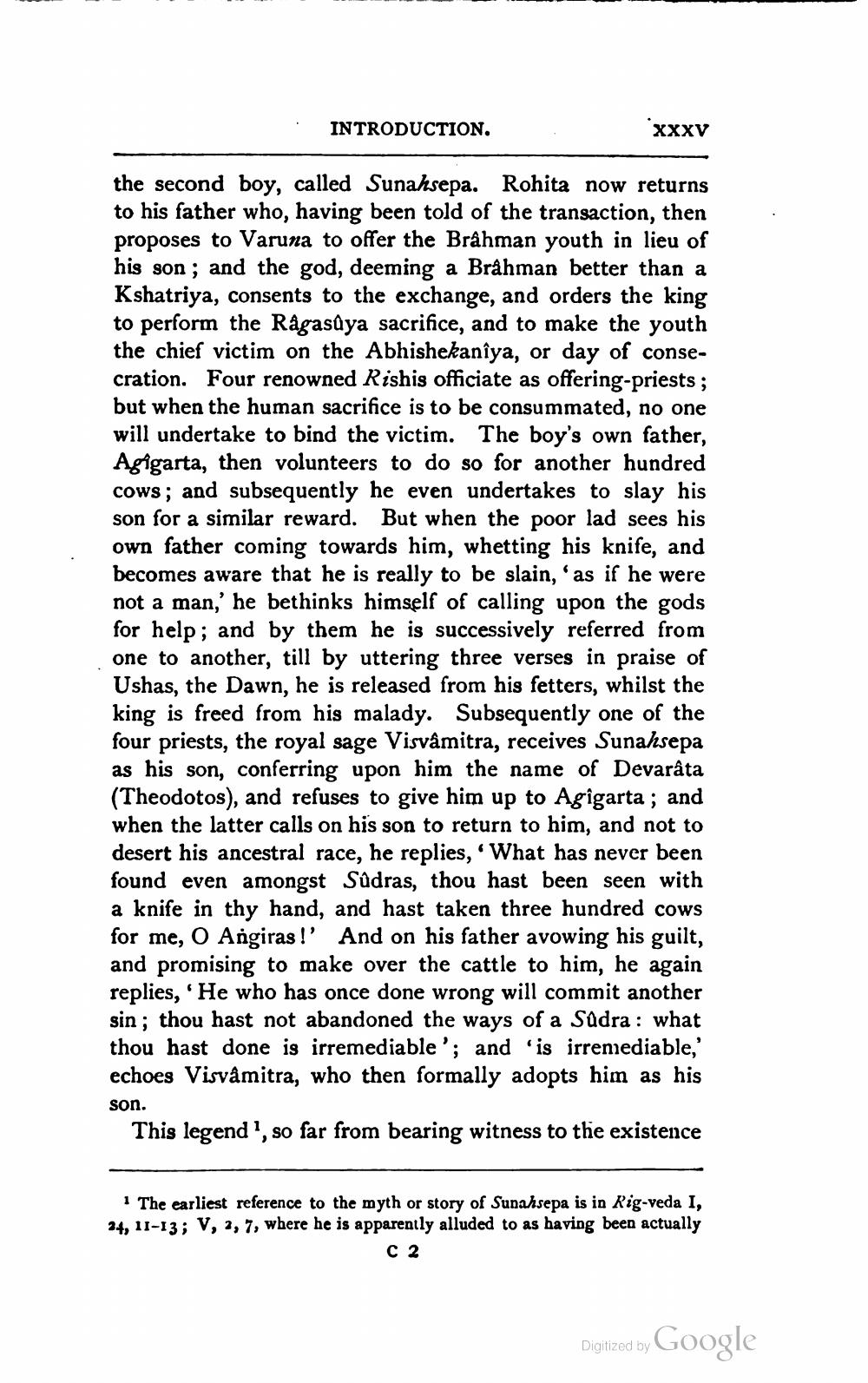________________
•
INTRODUCTION.
XXXV
the second boy, called Sunahsepa. Rohita now returns to his father who, having been told of the transaction, then proposes to Varuna to offer the Brâhman youth in lieu of his son; and the god, deeming a Brâhman better than a Kshatriya, consents to the exchange, and orders the king to perform the Rågasuya sacrifice, and to make the youth the chief victim on the Abhishekanîya, or day of consecration. Four renowned Rishis officiate as offering-priests; but when the human sacrifice is to be consummated, no one will undertake to bind the victim. The boy's own father, Agigarta, then volunteers to do so for another hundred cows; and subsequently he even undertakes to slay his son for a similar reward. But when the poor lad sees his own father coming towards him, whetting his knife, and becomes aware that he is really to be slain, as if he were not a man,' he bethinks himself of calling upon the gods for help; and by them he is successively referred from one to another, till by uttering three verses in praise of Ushas, the Dawn, he is released from his fetters, whilst the king is freed from his malady. Subsequently one of the four priests, the royal sage Visvâmitra, receives Sunahsepa as his son, conferring upon him the name of Devarata (Theodotos), and refuses to give him up to Agigarta; and when the latter calls on his son to return to him, and not to desert his ancestral race, he replies, 'What has never been found even amongst Sudras, thou hast been seen with a knife in thy hand, and hast taken three hundred cows for me, O Angiras !' And on his father avowing his guilt, and promising to make over the cattle to him, he again replies, 'He who has once done wrong will commit another sin; thou hast not abandoned the ways of a Sudra : what thou hast done is irremediable'; and is irremediable,' echoes Visvamitra, who then formally adopts him as his son.
This legend ", so far from bearing witness to the existence
1 The earliest reference to the myth or story of Sunahsepa is in Rig-veda I, 34, 11-13; V, 2, 7, where he is apparently alluded to as having been actually
C 2
Digitized by Google




